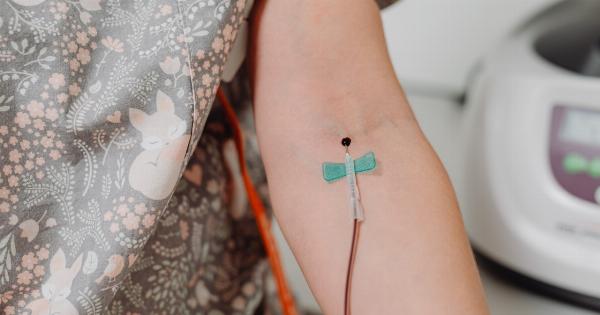The peripheral syringe is an essential tool used in the medical industry to administer medication to patients. It is used to inject medication into veins that are located away from the patient’s core or central circulation.
The significance of peripheral syringe is that it is less invasive and more comfortable for the patient compared to other medical procedures. In this article, we will discuss the significance of peripheral syringe and how to manage it.
What is a Peripheral Syringe?
A peripheral syringe is a type of syringe used to administer medication directly into the veins located away from the patient’s core or central circulation.
It is used when the patient requires medication to be infused directly into their bloodstream. Peripheral syringes are commonly used for treating conditions such as dehydration, electrolyte imbalances, and infections.
The peripheral syringe comprises two parts – a needle and a plastic plunger. The plunger is used to draw medication from a vial or ampoule, and the needle is used to inject the medication into the patient’s peripheral vein.
Peripheral syringes are available in different sizes ranging from 1ml to 20ml and can be used for various types of medication, including oral medication, antibiotics, and chemotherapy drugs.
How to Manage Peripheral Syringe
To manage peripheral syringe, you need to ensure that the syringe is sterile, and all the equipment required for administering medication is available. Before using a peripheral syringe, you should always wash your hands and wear gloves.
You should also ensure that the patient’s skin is clean, and the injection site is free from any bumps or lumps.
The following are the steps to manage peripheral syringe:.
Step 1: Prepare the Medication
The first step to managing a peripheral syringe is to prepare the medication. You should read the medication label carefully to ensure that you have the right medication and dosage. You should then draw the medication into the syringe using the plunger.
You should avoid overfilling the syringe to prevent medication spills or administering the wrong dosage.
Step 2: Prepare the Patient
The second step is to prepare the patient. You should explain to the patient what the procedure involves and reassure them that it will only take a few minutes.
You should also ensure that the patient’s skin is clean and sterile, and the injection site is visible. You may need to prepare a tourniquet to help locate the vein and make it easier to insert the needle.
Step 3: Locate the Vein
The third step is to locate the vein. You should use your fingers to feel for the vein and prepare the area by cleaning it with alcohol swab. You may also need to apply a tourniquet to distend the vein and make it easier to insert the needle.
Step 4: Insert the Needle
The fourth step is to insert the needle. You should insert the needle at a 15-30-degree angle and observe the flashback to ensure that you have entered the vein.
You should then remove the tourniquet and inject the medication slowly into the vein using the plunger.
Step 5: Remove the Needle
The fifth step is to remove the needle. You should withdraw the needle slowly and apply pressure on the injection site using a cotton ball to prevent bleeding. You should dispose of the needle and syringe safely in a sharps container.
Conclusion
The peripheral syringe is an essential tool used in the medical industry to administer medication to patients. It is used to inject medication into veins that are located away from the patient’s core or central circulation.
To manage a peripheral syringe, you need to ensure that the equipment used is sterile, and the medication is administered at the right dose. The steps involved in managing peripheral syringe include preparing the medication, preparing the patient, locating the vein, inserting the needle, and removing the needle.
By following these steps, you can ensure that the medication is administered safely and effectively to the patient.































